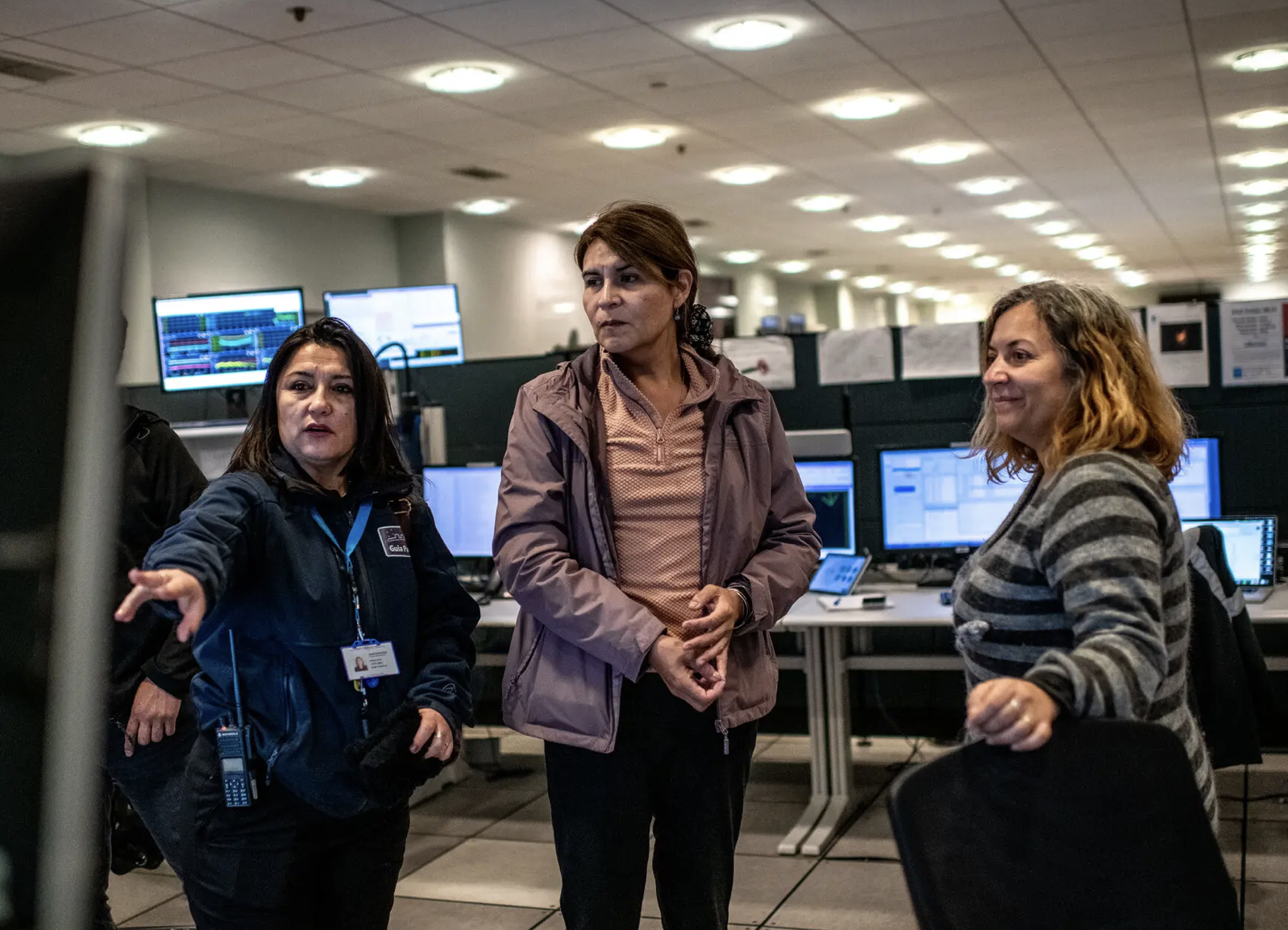The Fight for Dark Skies in the Atacama
By Emiliano Rodríguez Nuesch y María Morena Vicente
A Night That No Longer Sleeps
Chile’s Atacama Desert is one of the best places on Earth to look up. Its dry air, altitude, and near-constant clear skies have made it the world capital of astronomy. From here, scientists have mapped distant galaxies, studied black holes, and photographed the birth of stars.
But the darkness that made all this possible is fading. Mining operations, expanding cities, and satellite constellations are turning one of humanity’s clearest windows to the universe into a mirror of its own activity.
The Milky Way shines above ESO's Paranal Observatory in Northern Chile's Atacama Desert. . | Credit:
ESO/P. Horálek
“The proximity of the AES Andes industrial megaproject to Paranal poses a critical risk to the most pristine night skies on the planet,” warned European Southern Observatory Director General Xavier Barcons. “Dust emissions during construction, increased atmospheric turbulence, and especially light pollution will irreparably impact the capabilities for astronomical observation.”
Chile hosts about 70% of the world’s astronomical infrastructure: the ALMA array, the Paranal Observatory, and soon, the Extremely Large Telescope. Yet, the same north is glowing brighter each year. Mining and renewable energy projects are transforming the desert—and the night. Light travels far in the thin Atacama air, scattering across hundreds of kilometers and erasing faint stars. Astronomers warn that even small increases in brightness can disrupt decades of research. For local communities who depend on astrotourism, the loss of darkness also means the loss of meaning.
Copper, Lithium Mines in Chile's Atacama Desert Threaten Astronomy. Photo: Cristobal Olivares.
Astronomers argue that protecting darkness should be treated like protecting biodiversity —both safeguard fragile ecosystems. Without stricter light controls, this progress could undermine decades of scientific investment. Even small increases in skyglow disrupt sensitive measurements used to study exoplanets and deep-space objects.
For local communities that depend on astrotourism, losing the stars means losing part of their identity and economy. “What protected us before was distance,” says Ángel Otarola, astronomer and member of the Chilean Astronomical Society’s (SOCHIAS) light pollution committee. “Now these projects are getting closer.”
A Guardian of the Dark
Few people represent this struggle better than Eduardo Unda-Sanzana, director of theAstronomy Department at the University of Antofagasta.
For years, he has tracked light pollution across the desert, presented evidence to lawmakers, and pushed for stricter lighting rules. His advocacy helped Chile establish regulations on artificial light emissions, but those rules are now being tested by new megaprojects. “Darkness is extremely fragile,” Unda-Sanzana said in an interview. “It’s what allows me to see more clearly — the same way silence lets you hear a delicate sound.”
Unda-Sanzana, center, with his colleagues at the Paranal Observatory. The first observatory
in the region opened more than 100 years ago.
When he looks out his apartment window in Antofagasta, the glare of stadium lights spills into his room. He knows that glow represents a growing threat to his life’s work.
“If we lose these skies,” he told The New York Times, “we don’t lose them only for ourselves — we lose them for all humanity. There’s no replacement.”
Items inside Unda- Sanzana’s apartment. NYT.
Darkness to help us connect with the universe
When we flood the night with light, we erase our capacity to see — and to feel — what connects us to the universe. The night once offered perspective. Protecting darkness, then, is more than protecting stars. It’s about preserving our shared capacity for wonder; the foundation of compassion itself.
The fight for the Atacama’s dark skies asks a larger question: if we can no longer see the universe clearly, will we still feel part of it?




